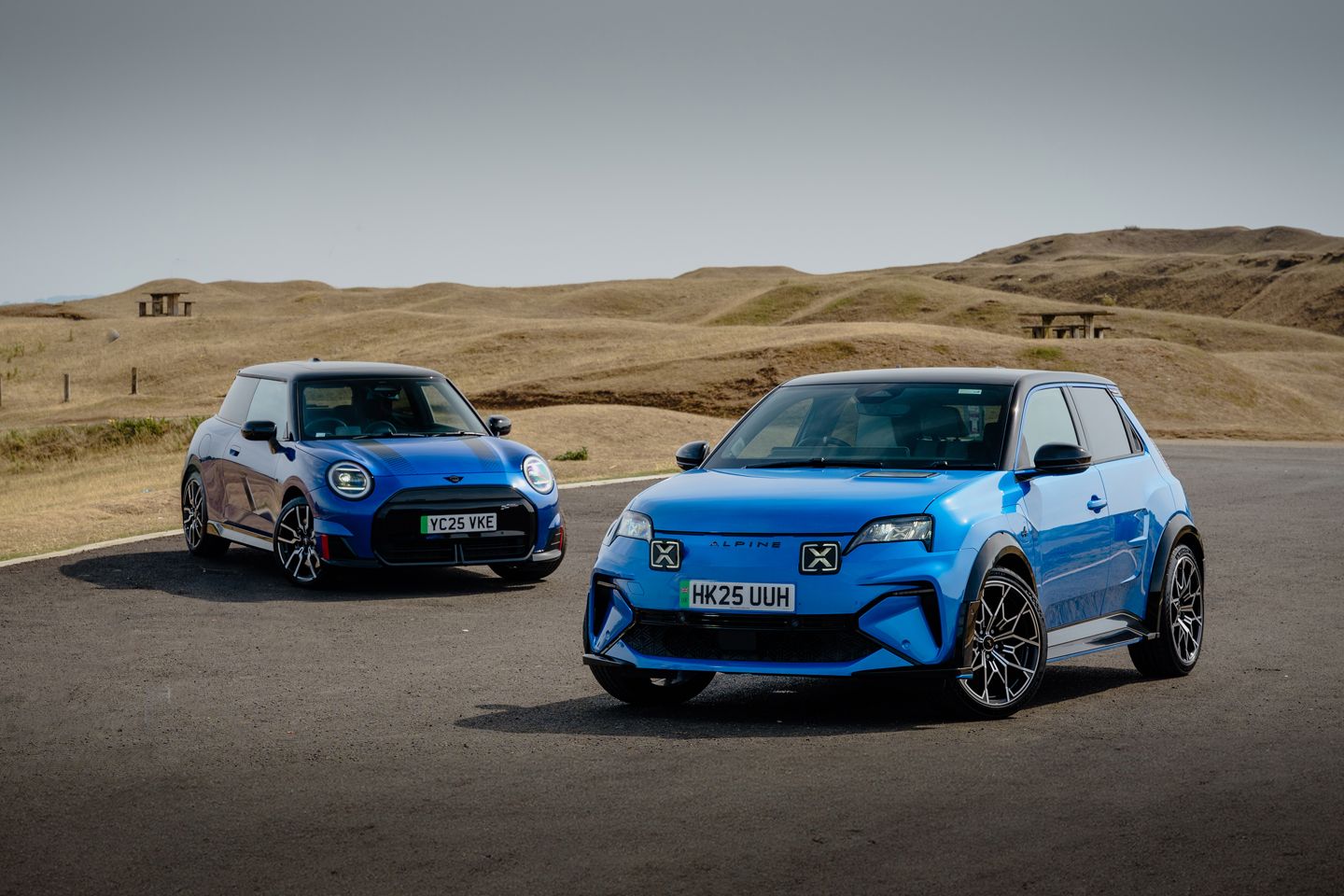
Alpine and Mini. Two names with indelible heritage carved on the stages of Monte Carlo (and beyond), now strapped to a pair of sensible little EVs. Inviting an Abarth along could have hammered the point home and formed a neat little trio, but it wouldn’t have benefited many parties. Instead, we have the crème de la crème of affordable(ish) electric hot hatchbacks. And a chance to refine the waiting party for Peugeot’s long-awaited E-208 GTI.
It helps that we’re back in a world of government grants, too, even if they’re being dished out sporadically and a little unpredictably. The A290 gets the smaller £1,500 cut at the time of writing; whether the Chinese-made Mini can compete remains to be seen.
The Alpine A290 range starts at £33,500 (£32k with the grant) for the 180hp, 7.4-second-to-62mph A290 GT or £37,500 (£36k) for this 220hp, 6.4-second A290 GTS. It gets a marginally higher 106mph top speed and a mite shorter range at 223 miles. Its 52kWh battery charges at up to 100kW on a rapid DC charger.
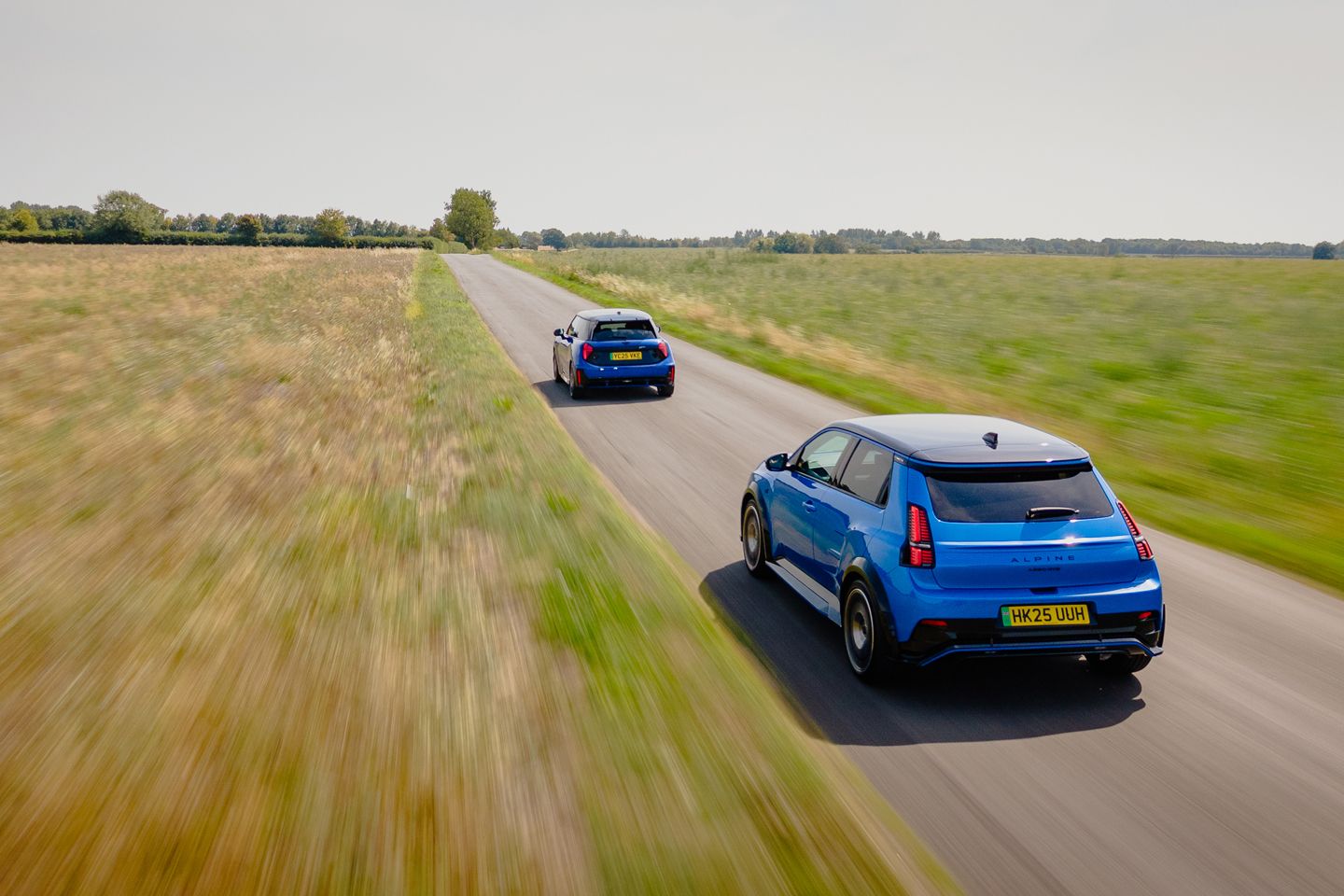
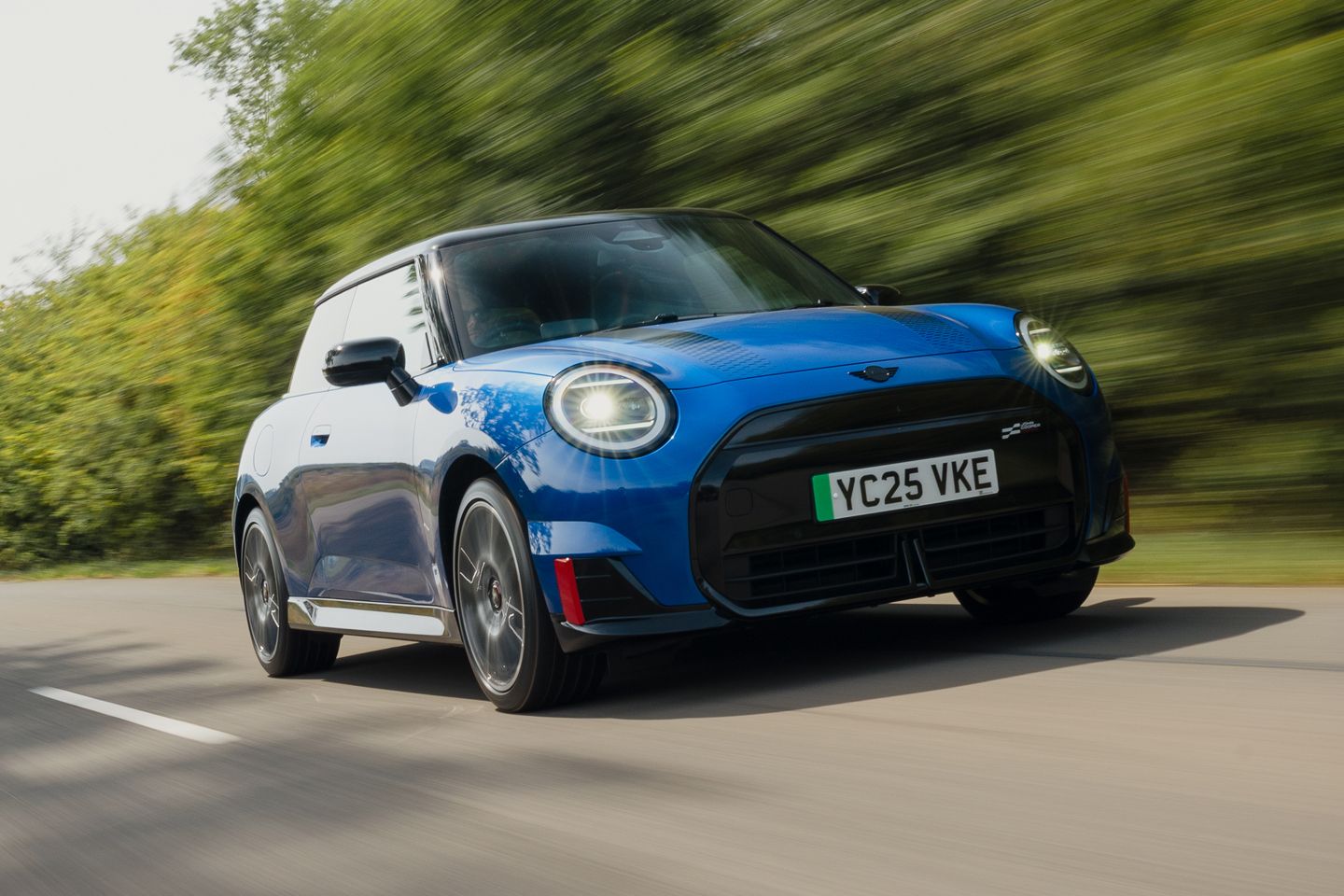
The Mini John Cooper Works Electric starts at £34,905 and offers 255hp, a 5.9-second sprint and 106mph top speed alongside a 230-mile range, 49.2kWh power and 95kW charging. While the pair’s claimed efficiency numbers favour the Mini, we had both cars displaying 3.6 miles per kWh on a sticky hot day of mixed, often enthusiastic driving. So let’s assume closer to 4.0 mi/kWh apiece with less air con and more pootling.
What’s a close match on paper appears a walkover for the Alpine from ten paces. Cor, does it look good, and a deeply unscientific straw poll suggests the British public currently agrees. This press A290 replaced a Lotus Emira outside my house and I fielded significantly more questions and adoration for the front-drive electric hatch. Average 50mph zones were enlivened by constant thumbs up and slow-moving smartphone paparazzi. Its design betrays precisely what it is – a cutely proportioned R5 with assertively flexed muscles. It’s a hit.
The muscle is applied equally as deftly to its driving manners. Its stocky 19-inch wheels and serious-looking Michelin Pilot Sport 5 tyres look gnarly, but the truth – thanks to its multi-linked, hydraulically bump-stopped suspension – is far friendlier. I can’t remember the last performance car to ride those horrid M6 expansion joints over Birmingham so well, while a truly menacing bump on the good road near my house (it’s sat right in a braking zone and shows the least likeable side of my own Hyundai i20N) is shrugged off with true French insouciance.
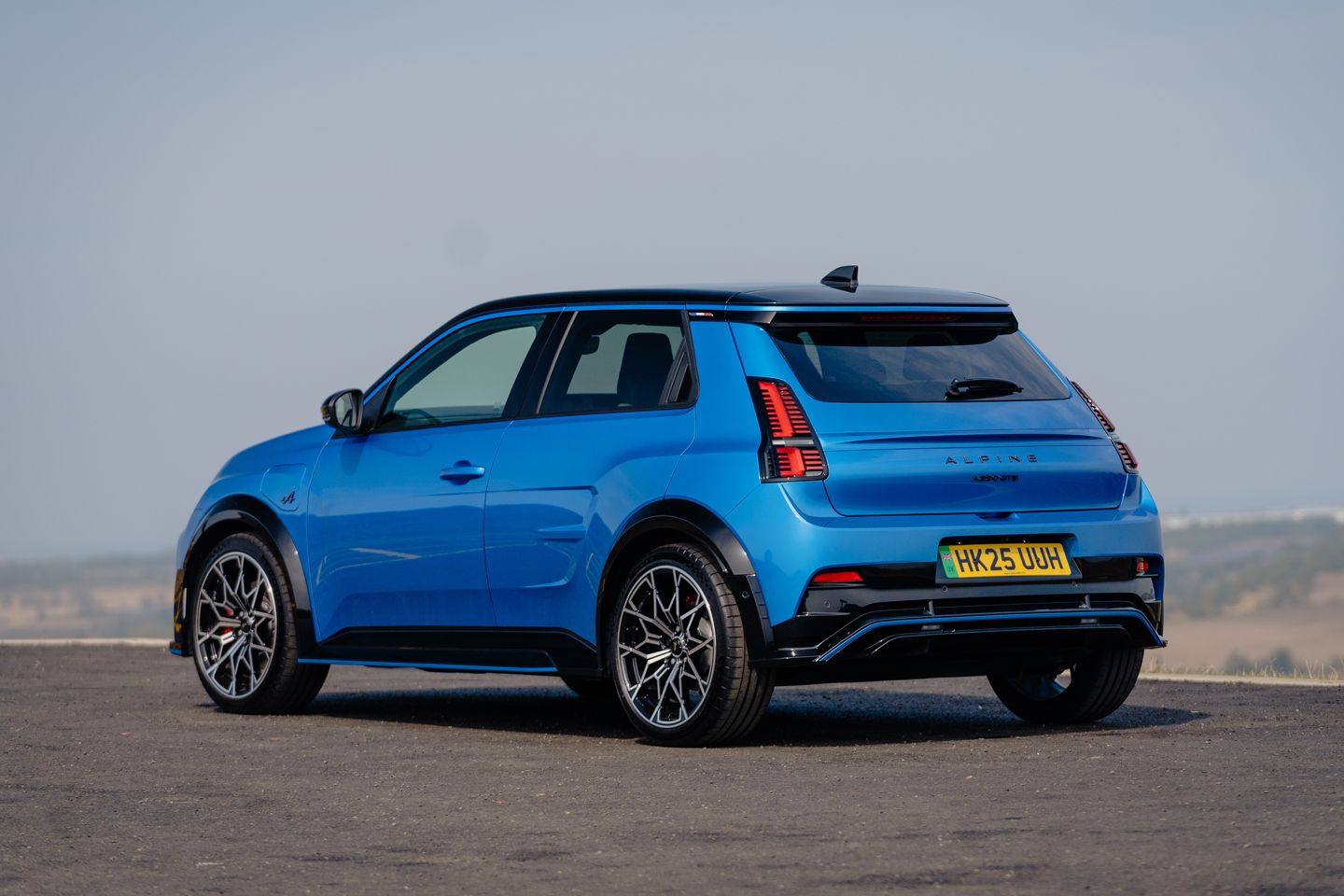
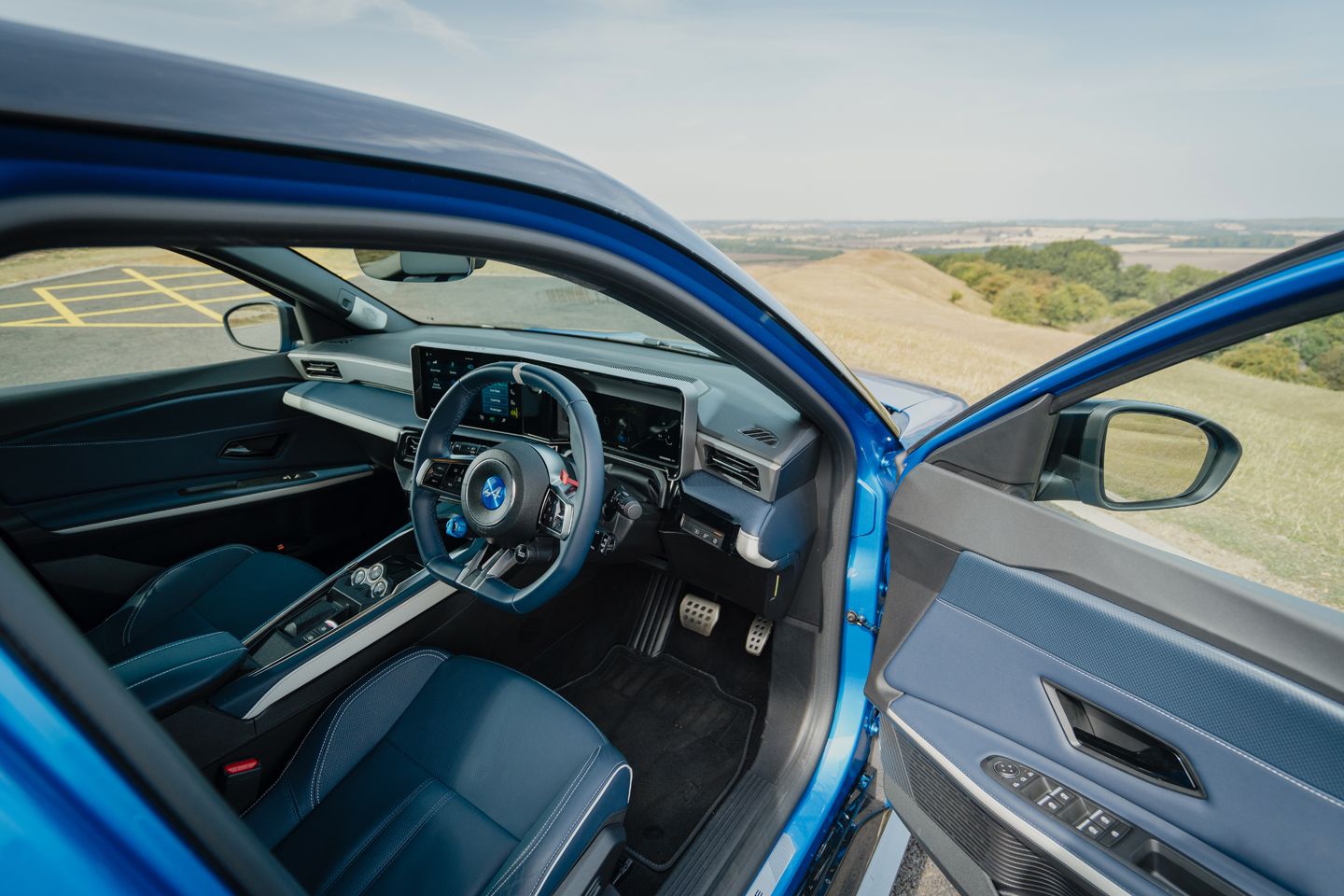
While a Megane R26.R reference is probably tenuous (though always welcome), it’s clear the same sort of people have worked on both cars. This GTS trim likely operates a few levels below where the A290 may ultimately end up, and a touch more power operating through an LSD of some kind may truly unleash the magic. Yet fresh from the box, it still demonstrates the barely flappable composure that just encourages you to keep throwing pace at it on a fun stretch of tarmac.
Humble though its performance is, its gradual, intuitive power delivery is welcome in a world of EVs that are whipcrack for the sake of it. This brings a much more rounded experience, a car with great agility for its breed and enough of the old Renault Sport brio to feel special. It just happens to be a much better everyday proposition now; comfy ride, back doors (even if the rear seats won’t fit larger folk), the winning combo of usable range from a modest battery – to help even tame charging speeds feel brisk – and with tech that is copious but smartly integrated.
Its built-in Google Maps combines accurate traffic data and clever charge planning to make CarPlay look superfluous. Flicking through the various regen settings on its steering wheel dial mixes intuitive operation and tactile fun, too. It says a lot when the biggest dent on the A290’s daily livability is an absence of cupholders – perhaps the French would rather we sip a café au lait by the side of the road than neck a Costa Express on the go.
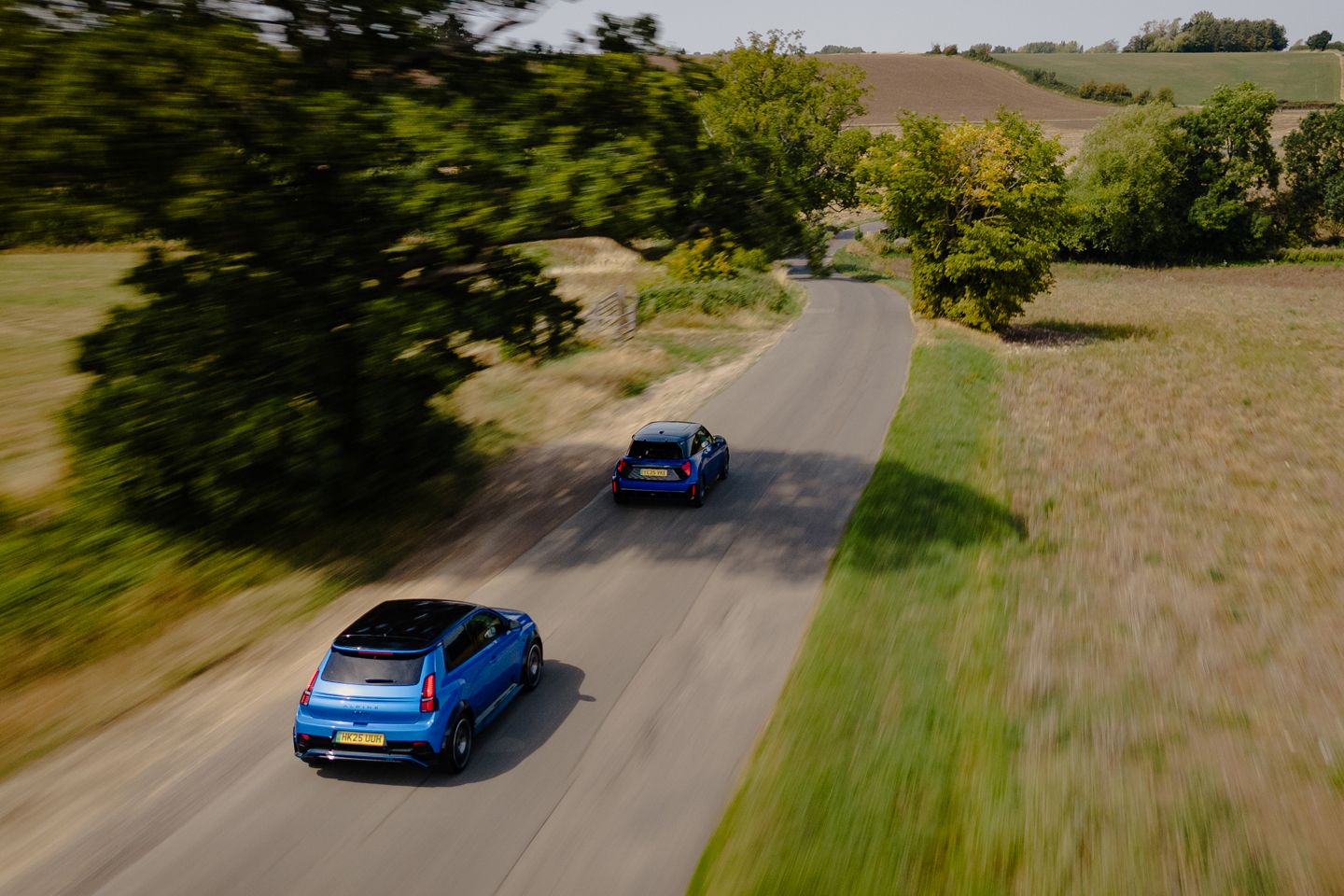
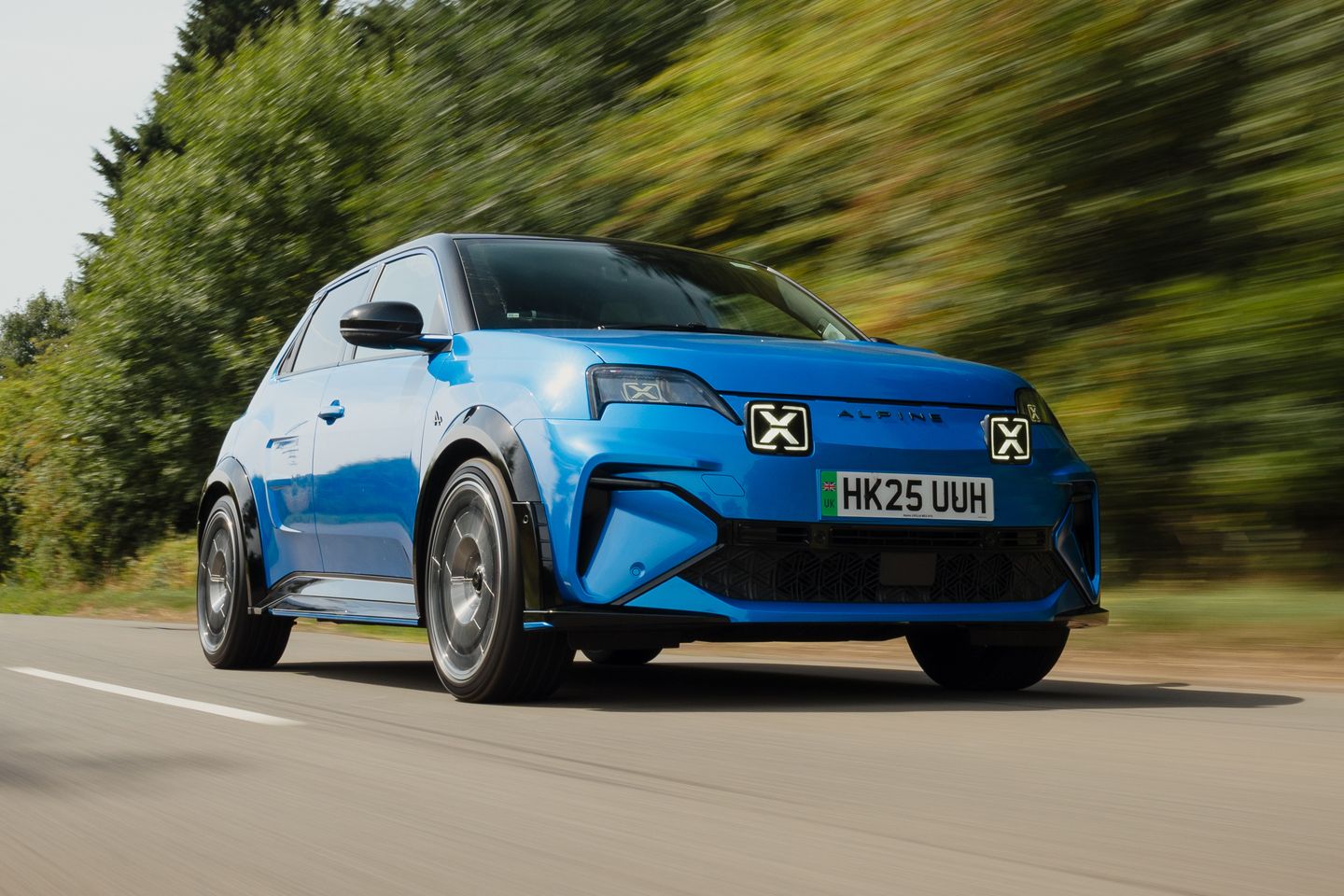
An arguable downside of its evident usability is how reminiscent its interior is of other Renault Group EVs. It means the cabin is logical, but it also perches you high in a practical position. No such issues in the Mini, which drops you low and central in the wheelbase, with John Cooper Works fabric straps never more than a few inches away to remind you of its focus.
And boy, what focus. Based on a newer platform than the petrol JCW, it gets its own unique suspension setup, including more negatively cambered front wheels, with no adaptive damping to help take the edge off. As Matt B found, this is a firm car, one which makes a meal out of visibly smooth surfaces and vividly communicates every knot, rut, and bump to its driver without delivering appropriate levels of precision as a reward. On tighter roads, it can be a challenge to keep it tucked neatly between the white lines.
Which does mean it’s the more immediately thrilling of our pair to drive, even if the purists will be befuddled by how much of a handful it can be down a straight piece of road. Yet it still demonstrates an absurd turn of pace beside the Alpine, marking itself out as a more boisterous and excitable car that sacrifices nuance for drama. Y’know, like turbo Works Minis always did against more finessed nat-asp RS Clios. As per JCW tradition, it readily serves up lift-off oversteer with more lurid inputs, your bum snugly amid all the action. You just pay the price for such tenacity through its ride. Constantly.
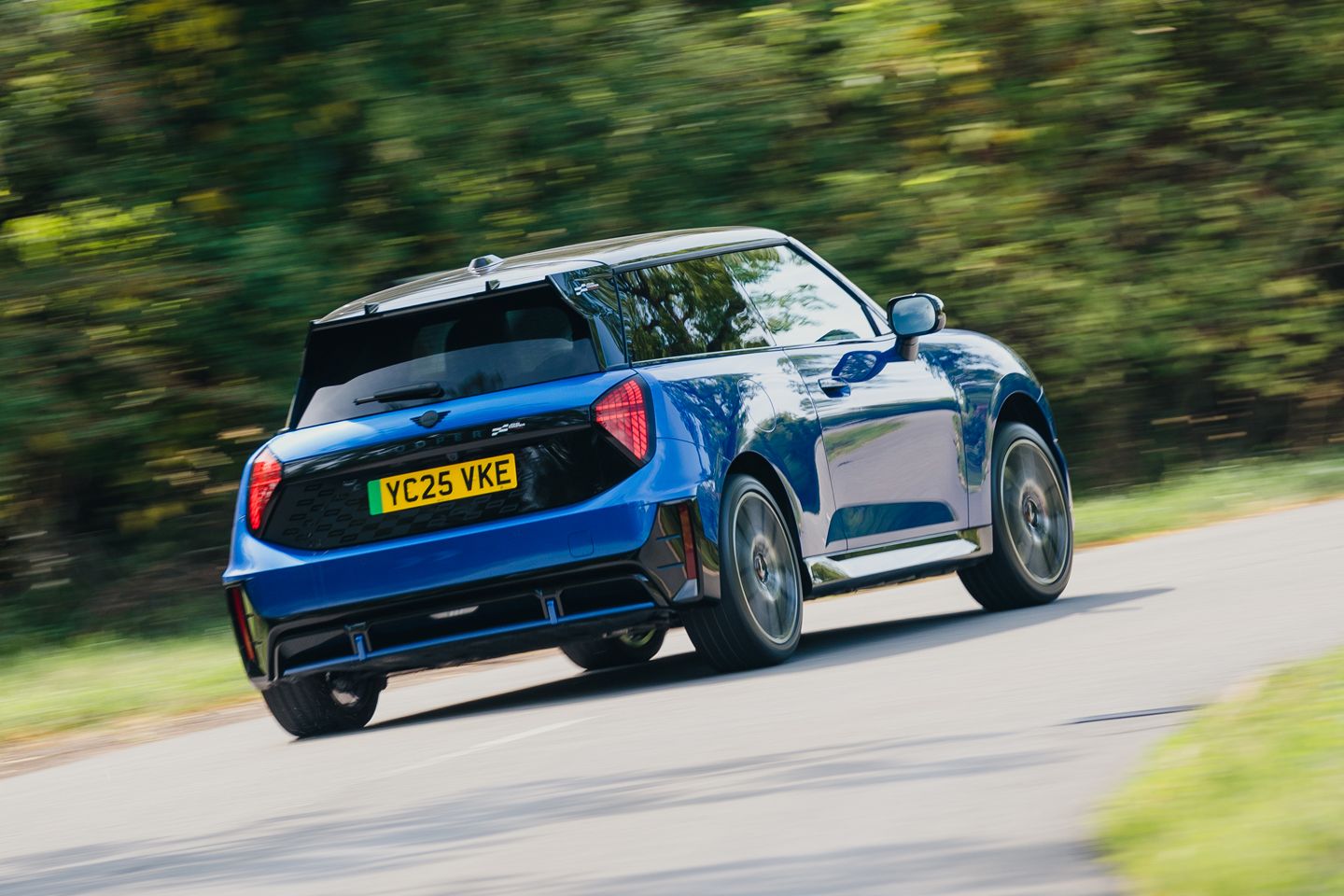

The powertrain still manages a pleasing linearity to its delivery, mind, and its urgency well beyond 60mph – right when most EVs begin to wane – ought to make it a dark horse on your local track evening. If taking a 1.7-ton EV on circuit doesn’t strike you as utter madness, of course. Its Boost paddle brings another 27hp for a ten-second sprint, although if you’re in the sportiest Go-Kart mode (complete with cringeworthy ‘woo-hoo!’ on application), you’ll have the full 255hp hit already. It’s all supplemented by a synthesised sound programme that, like the Hans Zimmer ‘scape in BMWs, anchors you nicely into the powertrain while entertaining in that chintzy Mini way. And you can always turn it off if you aren’t keen.
Its vast circular OLED screens dominate inside, and I’m a big fan, not least because it makes pleasingly short work of turning off the ADAS nannies. Its native sat nav will perform the charge stops tricks of the Alpine, too, but something about the Google interface and traffic accuracy of the A290 just feels a bit more dynamic and less likely to leave you chasing your ETA.
Both possess a quality interior that, like their exterior design, has a charming and distinct character of its own. The Alpine feels like a fine, low-ABV French lager that slips down easily. The Mini is a Jaegerbomb. It’s hard not to wonder how much more flexible a petrol JCW might feel against the same use case, whereas the Alpine is a great little device regardless of its powertrain – an electric car whose appeal is simultaneously because of its electrification while somehow incidental to it.

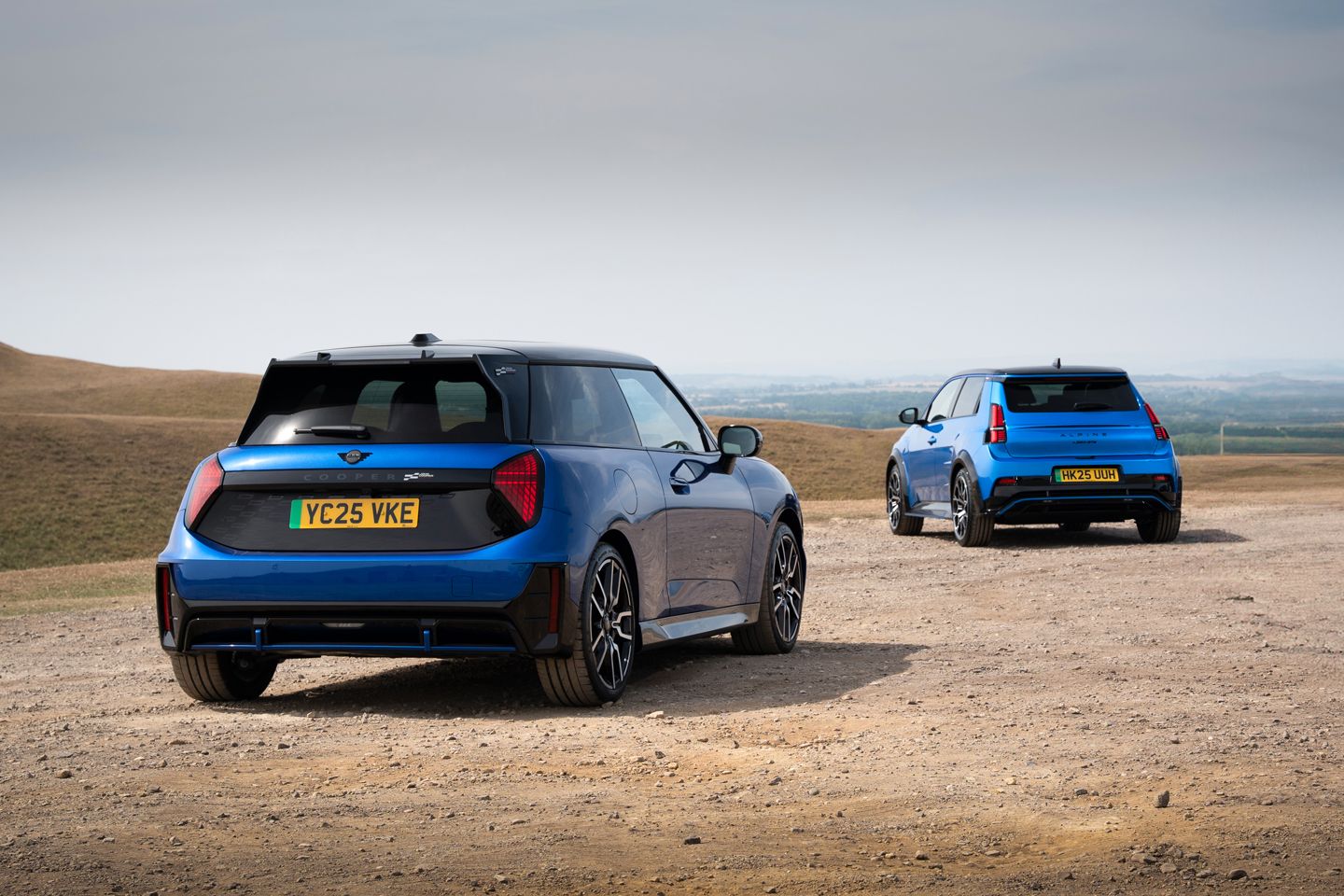
Crucially, it feels fun and frisky during even the everyday without the punishing ride of the Mini. And which of us wouldn’t smile at Brembo calipers peeking out at us beside bespoke-compound Michelins? We can’t pretend £36k is cheap, but tangibly seeing where some of it’s gone is always welcome.
Back in the ’90s, the hot hatch faced turmoil as spiralling thefts and insurance costs started to price it away from its core audience. The French helped remedy the situation with giveaway Saxos and 106s, the arrival of the Clio 172 at the turn of the 21st century truly signalling a golden age. Now, as the most mischievous of genres faces the growing pains of electrification, the A290 proves Les Bleus may save us once again. Bring on that 208…
SPECIFICATION | ALPINE A290 GTS
Engine: 52kWh battery (usable), single electric motor
Transmission: Single-speed automatic, front-wheel drive
Power (hp): 220
Torque (lb ft): 221
0-62mph: 6.4 seconds
Top speed: 106mph
Weight: 1,479kg
MPG: 223 miles WLTP range, 100kW max charge rate
CO2: 0g/km (driving), 3.8mi/kWh efficiency (3.6 tested)
Price: £37,500 (£36,000 inc. government grant)
SPECIFICATION | MINI JOHN COOPER WORKS ELECTRIC
Engine: 49.2kWh battery (usable), single electric motor
Transmission: Single-speed automatic, front-wheel drive
Power (hp): 255
Torque (lb ft): 258
0-62mph: 5.9 seconds
Top speed: 106mph
Weight: 1,725kg
MPG: 230 miles WLTP range, 95kW max charge rate
CO2: 0g/km (driving), 4.1mi/kWh efficiency (3.6 tested)
Price: £34,905

